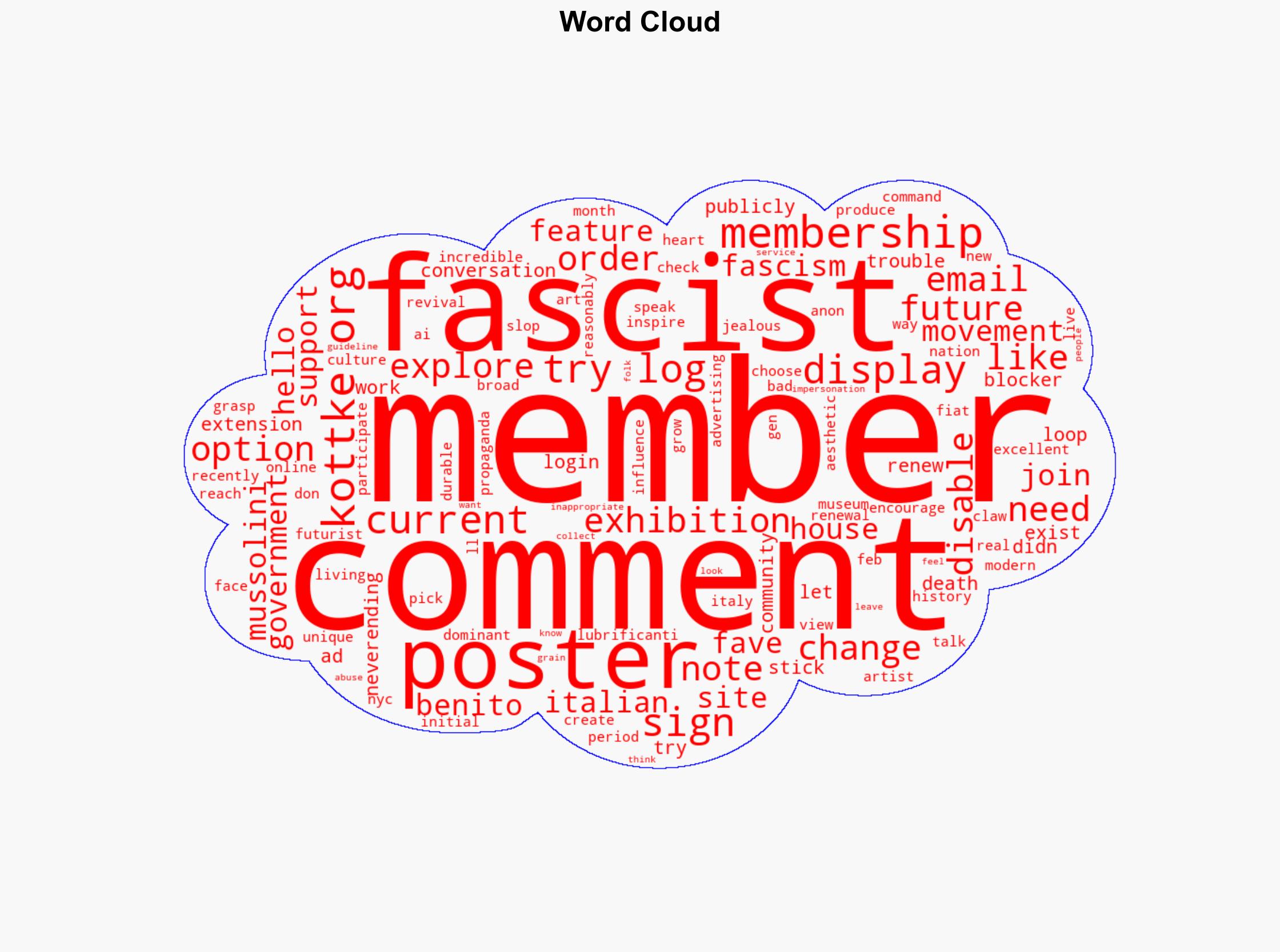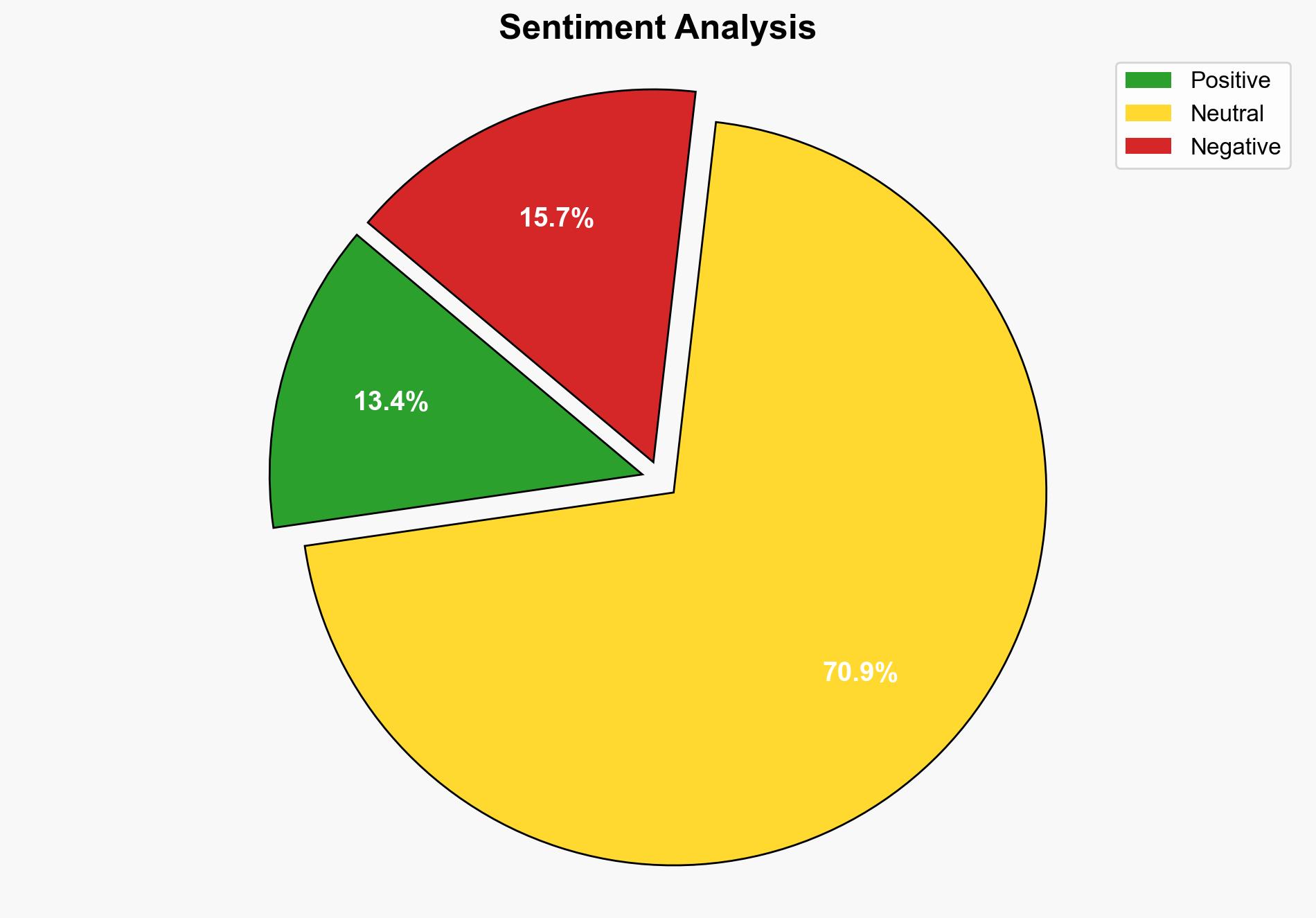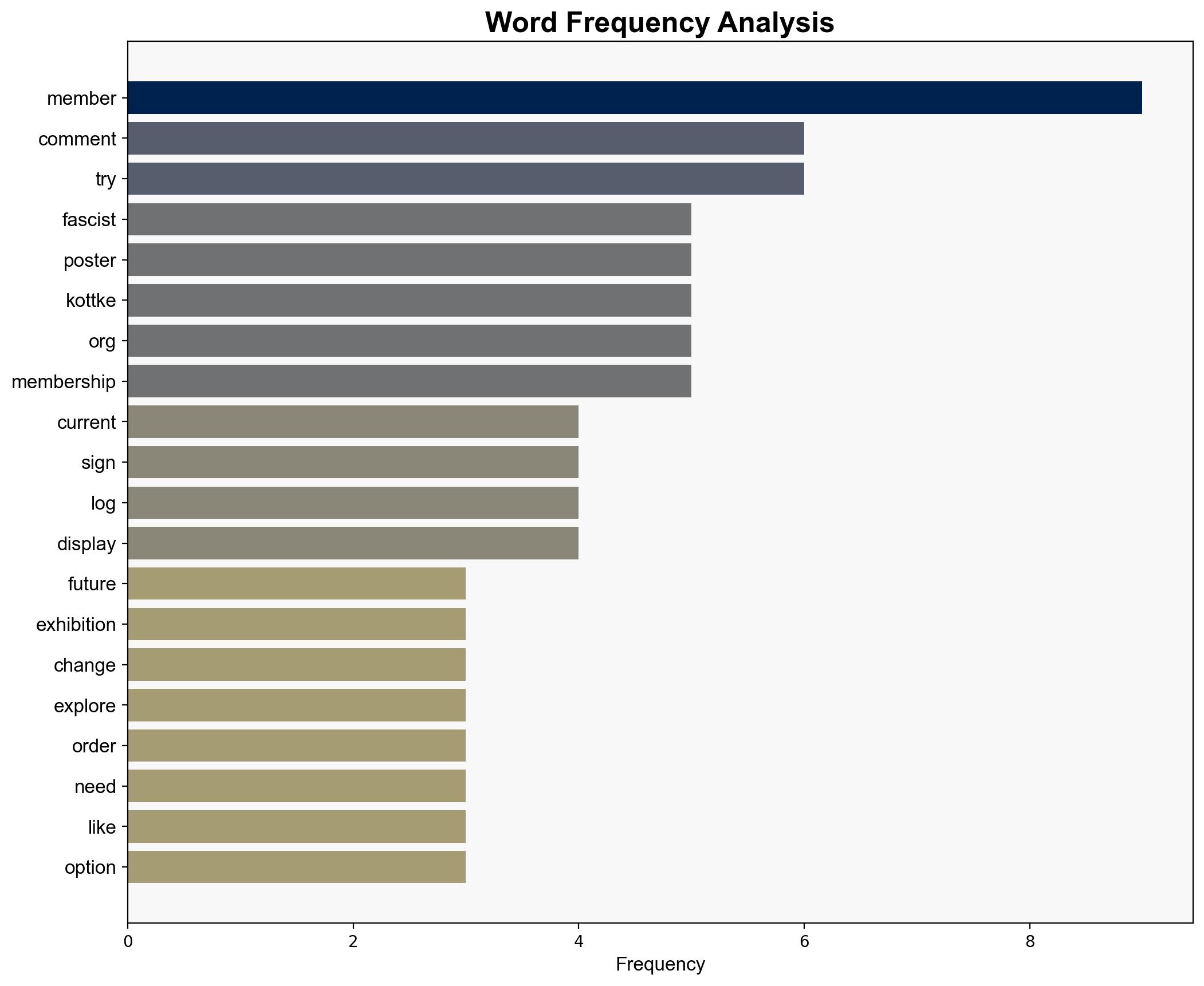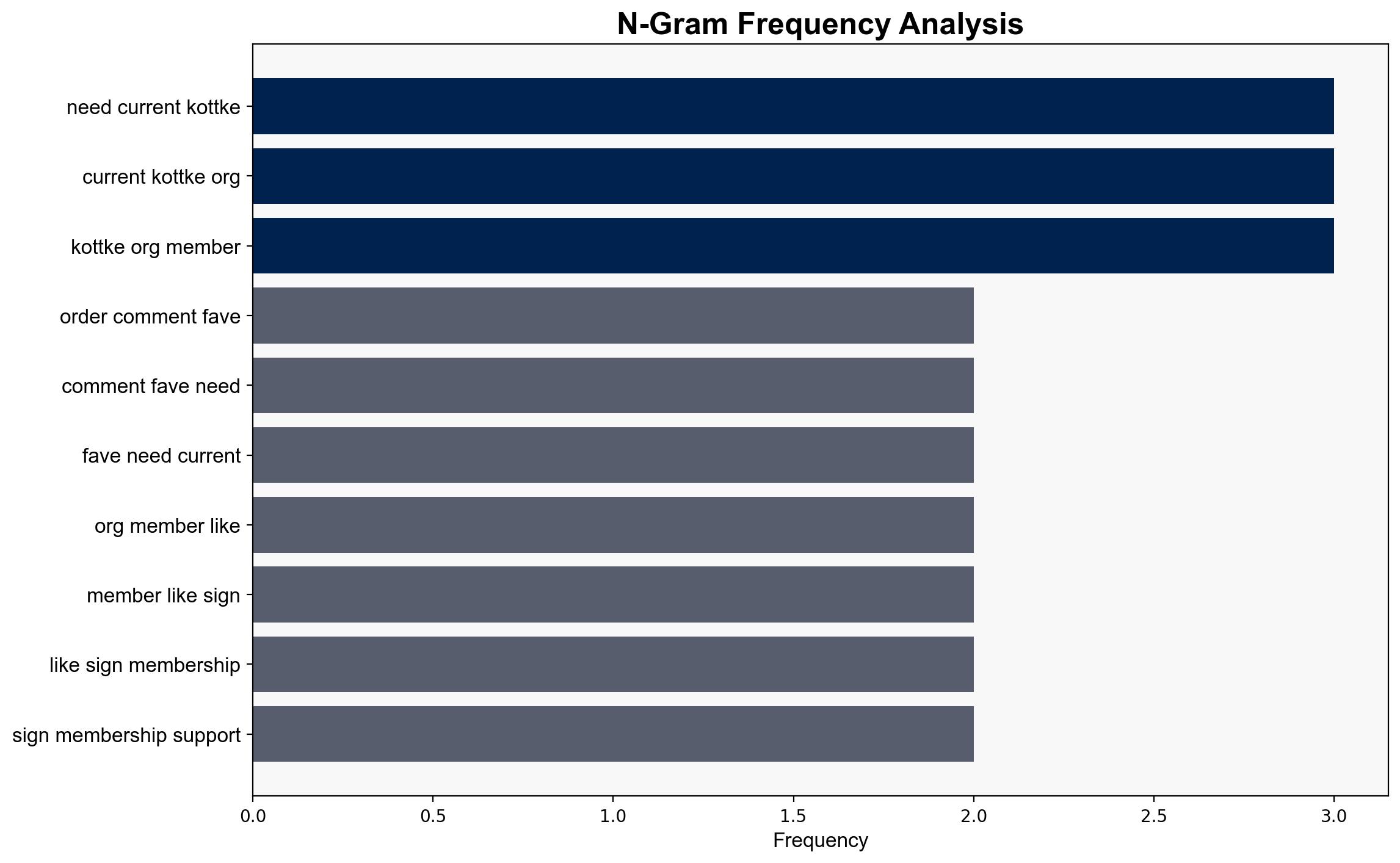The Future Was Then an Exhibition of Fascist Italian Posters – kottke.org
Published on: 2025-09-30
Intelligence Report: The Future Was Then an Exhibition of Fascist Italian Posters – kottke.org
1. BLUF (Bottom Line Up Front)
The exhibition of Fascist Italian posters at the Poster House Museum in NYC presents a dual narrative: it could either be an innocent exploration of historical art or a subtle revival of fascist aesthetics. The most supported hypothesis is that the exhibition primarily aims to educate and reflect on historical art movements, with a moderate confidence level. Recommended action includes monitoring public reception and discourse to identify any potential extremist exploitation.
2. Competing Hypotheses
1. **Educational and Historical Reflection Hypothesis**: The exhibition is intended to educate the public on the historical context and artistic movements of Fascist Italy, focusing on the influence of propaganda on art.
2. **Revivalist or Neo-Fascist Influence Hypothesis**: The exhibition could be interpreted or co-opted by certain groups as a revival or endorsement of fascist aesthetics, potentially fueling extremist ideologies.
Using ACH 2.0, the first hypothesis is better supported by the context provided, as the exhibition is hosted in a reputable museum with a focus on historical art. The second hypothesis lacks direct evidence but cannot be entirely dismissed due to the sensitive nature of the subject matter.
3. Key Assumptions and Red Flags
– **Assumptions**: It is assumed that the museum’s intent is purely educational and that the audience will interpret the exhibition in this light.
– **Red Flags**: The potential for extremist groups to misinterpret or exploit the exhibition for propaganda purposes. The lack of explicit disclaimers or educational context could lead to misinterpretation.
– **Blind Spots**: The absence of data on the museum’s security measures against potential misuse or extremist appropriation of the exhibition.
4. Implications and Strategic Risks
– **Cultural Implications**: The exhibition could spark renewed interest in fascist aesthetics, influencing cultural and artistic circles.
– **Geopolitical Risks**: If misinterpreted, the exhibition could strain international relations, especially with countries sensitive to fascist symbolism.
– **Psychological Impact**: Potential normalization of fascist imagery could desensitize audiences to extremist ideologies.
5. Recommendations and Outlook
- **Mitigation**: Encourage the museum to provide clear educational context and disclaimers to prevent misinterpretation.
- **Monitoring**: Track public and media reactions to identify any extremist narratives or exploitation.
- **Scenario Projections**:
– **Best Case**: The exhibition is widely recognized for its educational value, enhancing public understanding of historical art.
– **Worst Case**: The exhibition is co-opted by extremist groups, leading to increased neo-fascist activity.
– **Most Likely**: The exhibition proceeds with minor controversies, primarily serving as an educational tool.
6. Key Individuals and Entities
– Benito Mussolini (historical figure referenced in the exhibition)
– Poster House Museum (host of the exhibition)
7. Thematic Tags
national security threats, cultural analysis, extremist monitoring, historical education





